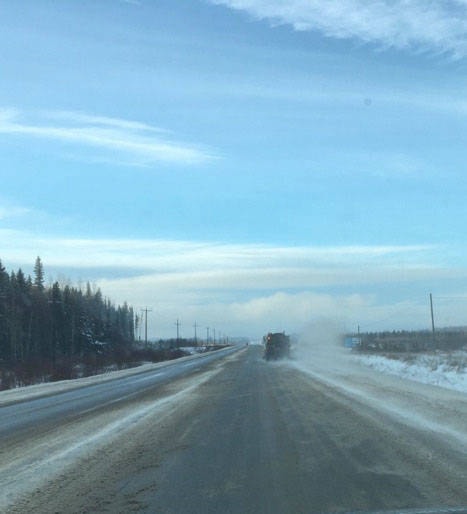The recent heavy snowfall has made road safety top of mind for Houston residents and all eyes are on Lakes District Maintenance (LDM), which takes care of local roads.
The provincial Ministry of Transportation and Infrastructure awarded LDM the $6.1 million contract for road maintenance, which came into effect on Sept. 18, 2018 and lasts for 10 years, with a five-year extension.
Some specifications under the new contract have changed, most notably the time the contractor has to clear snow from roads, LDM general manager Mike Philip told Black Press.
How fast the snow must be cleared depends on how busy the roads are, and the ministry classifies roads and highways from “A” to “E” according to traffic density.
Highway 16, for example, is a Class A highway in its entirety from the Alberta border west to Prince Rupert.
Highway 35 is a Class B road.
Class C roads might be school bus or industrial traffic routes, with D and E roads being those less used.
If a route becomes more popular or sees an increase in commercial traffic, it may be upgraded to a higher class of road.
The Highway Snow Removal section of the contract states that for Class A highways, “The Contractor must start removing snow on the full width of the Travelled Lanes, ensuring that accumulations remain below the Maximum Allowable Accumulations” which are 4 centimetres of snow for one lane in each direction and 8 cm for second lanes.
The allowable accumulations for B and C highways are 6 and 10 centimetres, respectively.
The section further stipulates that for Class A highways, unsafe amounts of snow and slush on traveled lanes must be plowed within 90 minutes, and within two hours for Class B highways.
After what the Ministry calls “the last measurable snowfall”, the contractor has to complete the removal of snow and slush from all traveled lanes of Class A to C highways within two days, and in the same period for snowfall deeper than 5 cm for Class D highways.
The contract also requires that anti-icing chemicals or winter abrasives be applied to roads to prevent them becoming slippery.
On Class A highways, the contractor has 60 minutes to apply those resources once snowfall has begun on hills of gradients over 5 per cent or curves under 60 km per hour, and 90 mins for school zones and intersections.
Immediate application is required on all locations if slippery surfaces are found by contractor patrols.
Other changes to the contract include the use of smaller grains of sand on the road, the installation of GPS units in the plow trucks, and new lighting standards for the trucks, Philip explained.
Despite the new contract, social media users were fast to criticize what they said was a lack of action from LDM after the heavy snowfall of late December.
In response, Philip said that those with concerns about road service in the Lakes District should contact LDM’s 24-hour call center at 1-888-255-8055 or through its website https://ldmltd.ca/contact/, instead of expressing road issues via social media.
